A monument carved in myth, majesty, and the meticulous craftsmanship of a bygone era, reflecting the spiritual harmony and architectural brilliance of Java’s past.
Step into the realm of Prambanan, a majestic temple complex that stands as a testament to Indonesia’s rich cultural tapestry and spiritual heritage.
Imagine towering spires that reach towards the heavens, intricate carvings that narrate ancient epics, and the serene ambiance that envelops this sacred site.
Prambanan is not just an architectural marvel; it’s a bridge to Java’s historical and spiritual dimensions, offering a glimpse into a world where mythology and history intertwine seamlessly.
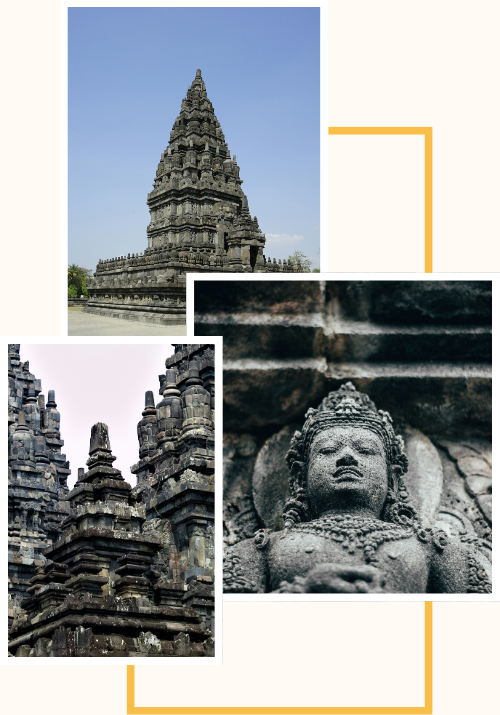

Open daily from 6:00 AM to 5:00 PM
Modest and respectful clothing is recommended.
Early morning or late afternoon to avoid the heat and enjoy the temple in softer light. The months of April to October offer the best weather conditions.
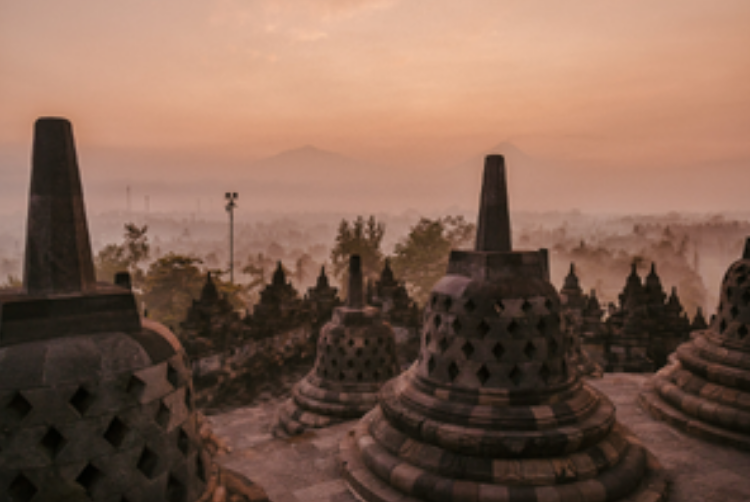
An open-air shopping paradise, blending retail luxury with natural beauty, right next to the temple.
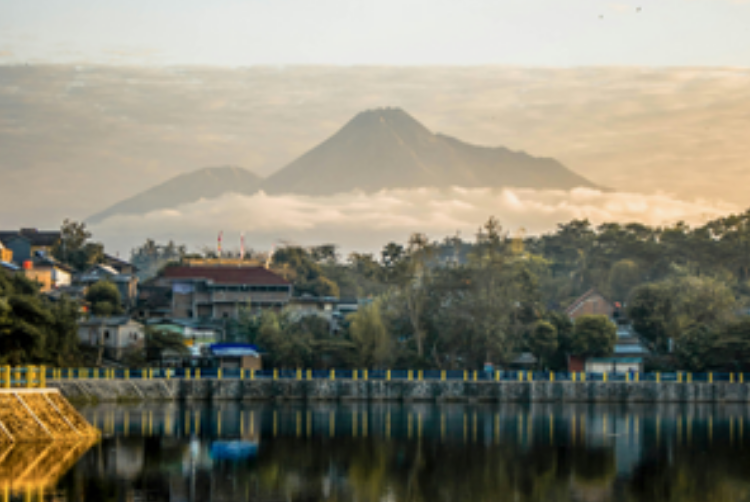
Uncover your ancestry in one of the world’s largest genealogical libraries, adjacent to the temple.
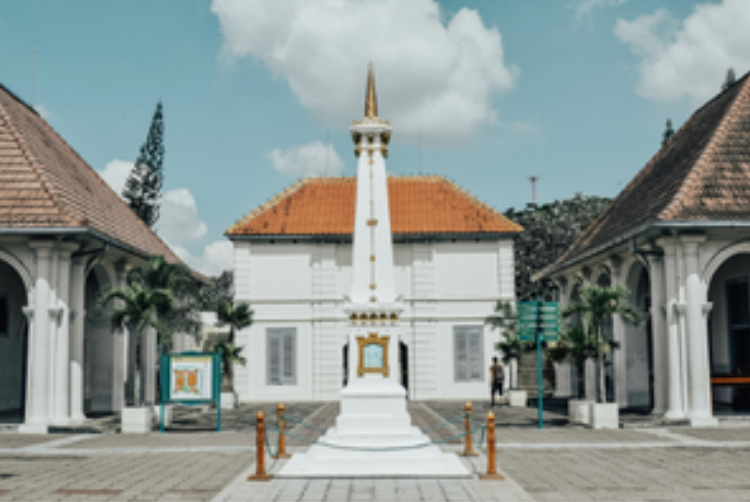
Trolley Square offers a quirky and eclectic shopping experience, housed within a historic trolley car barn.
Largest Hindu temple site in Indonesia.
Constructed in the 9th century.
The temple complex comprises 240 temples.

UNESCO World Heritage Site since 1991.
The temple was abandoned in the early 11th century.
Prambanan is also famous for its Ramayana Ballet.





The tale of Roro Jonggrang is woven into the very stones of Prambanan. According to Javanese folklore, the temple was the result of a love story marked by magic, betrayal, and a curse.
The prince Bandung Bondowoso fell in love with the beautiful princess Roro Jonggrang. To win her hand in marriage, she requested he build a thousand temples in one night.
With the help of spirits, he nearly completed the task, but through trickery, she prevented his success.
In anger, he turned her into the final statue, completing the thousand temples.

Hidden by jungle for centuries, Prambanan was rediscovered in the 17th century by British surveyors.
Its restoration has been an ongoing journey, reflecting Indonesia’s dedication to preserving its cultural heritage.
The massive earthquake of 2006 damaged the complex, but efforts to restore Prambanan have showcased a blend of traditional techniques and modern science, underlining the temple’s resilience and the enduring spirit of the Javanese people.
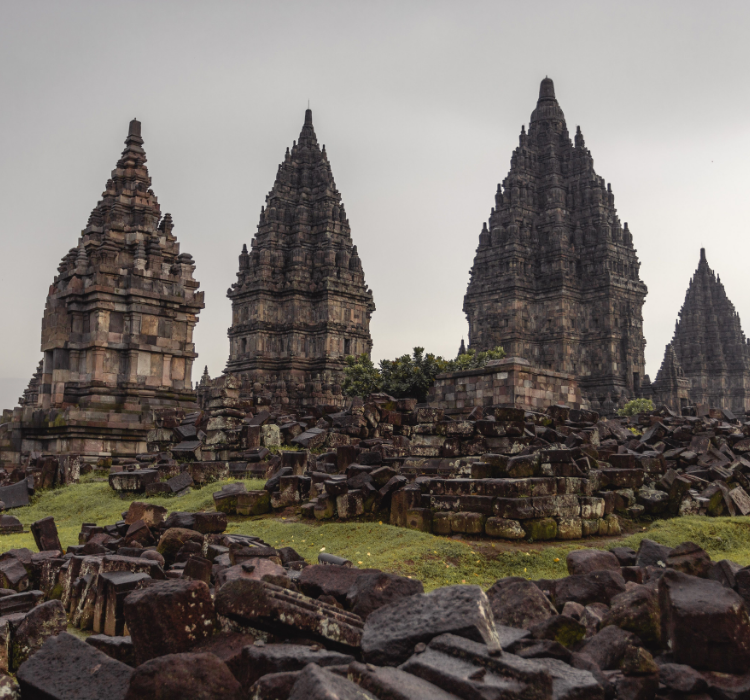
Prambanan’s architecture is a masterclass in Hindu cosmology, carved in stone.
Each temple reflects a blend of Indonesian artistry and Hindu symbolism, with the central Shiva temple soaring 47 meters high, embodying the universe's center.
The bas-reliefs along the temple walls narrate the epic tales of the Ramayana, offering not just a visual feast but a spiritual journey through the dharma (righteous path) of its protagonists.
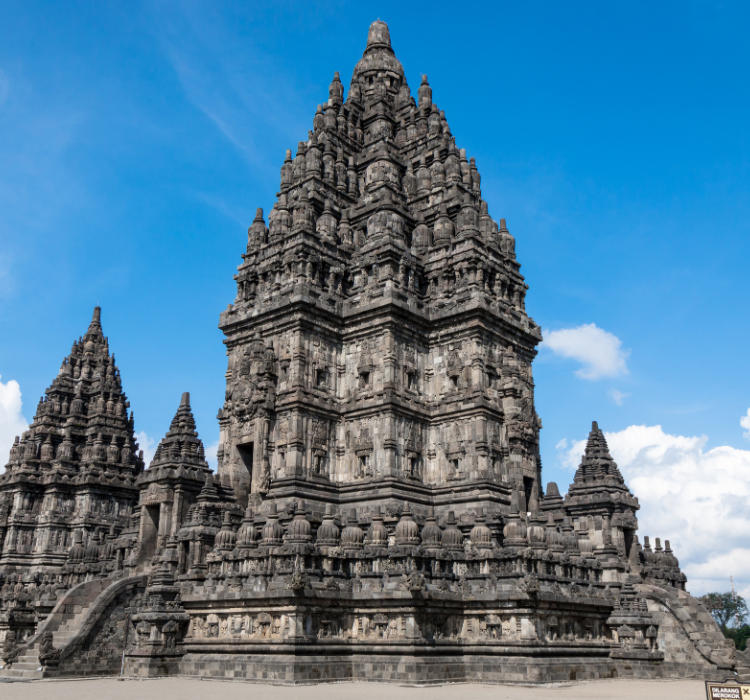
Despite being centuries old, Prambanan is a living cultural site where Hindu traditions are observed, particularly during the Siva Ratri, the night dedicated to Shiva.
These ceremonies underscore the temple's ongoing religious significance and the vibrant spiritual life that continues to thrive around this ancient monument.

Under the moonlit sky, the open-air theater near Prambanan comes alive with the Ramayana Ballet.
This performance is a stunning blend of Javanese dance, drama, and music, telling the Ramayana's timeless tale against the backdrop of the temple's silhouetted spires.
It’s a cultural experience that transcends time, connecting audiences with the heart of Javanese artistic expression.
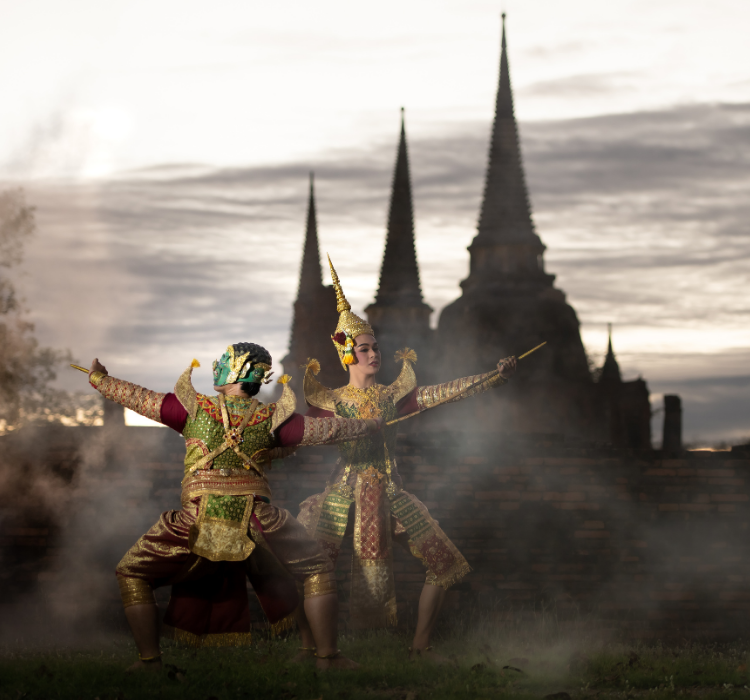
Prambanan stands as a symbol of harmony between Indonesia’s diverse religious communities.
Its proximity to the Buddhist temple of Borobudur speaks volumes about the island’s historical pluralism and the mutual respect that defines the spirit of Java.
Prambanan is not just a monument to Hindu faith but a beacon of Indonesia’s rich, multicultural fabric.

With every visit, Prambanan reveals layers of mysteries and stories yet untold. Scholars and spiritual seekers alike are drawn to its ancient wisdom, seeking to unravel the cosmic truths encoded in its stones.
As the sun sets and casts its golden light on the temples, one can’t help but feel connected to something eternal, a bridge to the divine that has stood the test of time.
Join us in exploring Prambanan, where each stone tells a story of love, devotion, and the celestial dance of the gods.
It’s a journey that promises not just a voyage through history but an encounter with the sublime.
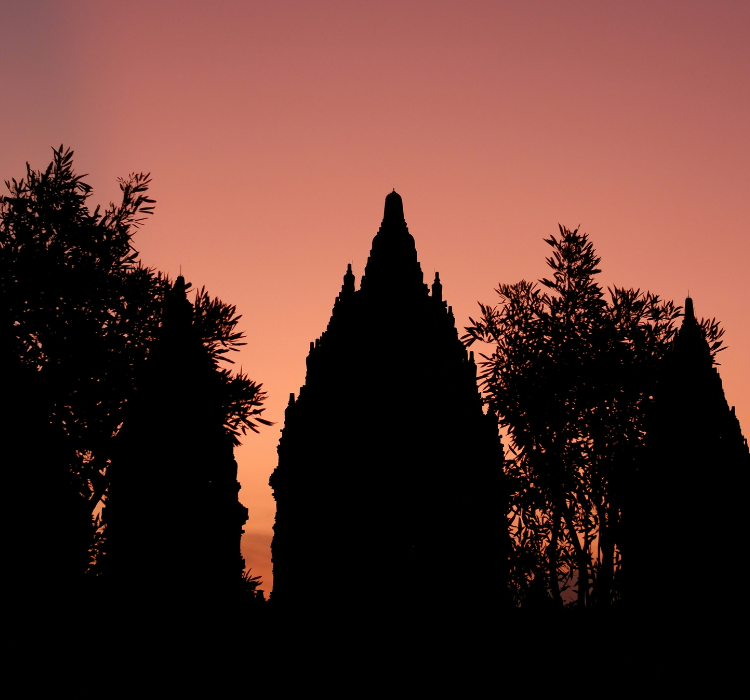
Construction of Prambanan begins during the reign of the Sanjaya Dynasty, symbolizing the Hindu revival in Java after centuries of Buddhist dominance.

Prambanan is dedicated, with the main temple honoring Lord Shiva, and surrounded by smaller temples for Brahma, Vishnu, and a host of other deities and demigods.

Prambanan is dedicated, with the main temple honoring Lord Shiva, and surrounded by smaller temples for Brahma, Vishnu, and a host of other deities and demigods.

The temple is mysteriously abandoned, possibly due to the eruption of nearby Mount Merapi or a shift in political power and religious preference to Buddhism and later Islam.
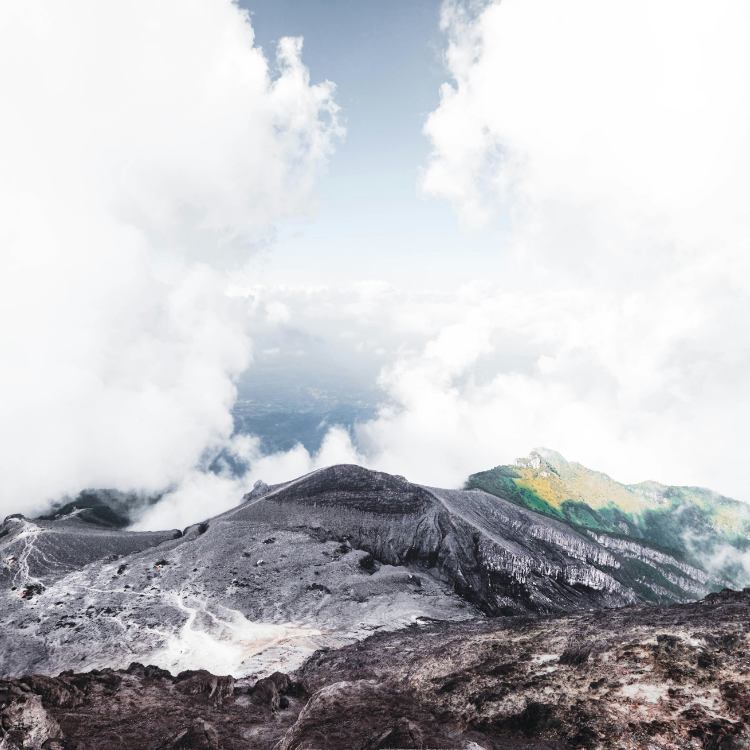
The temple is rediscovered, lying in ruin, covered by volcanic ash and overgrown vegetation, its glory forgotten and its stories turned into local folklore.
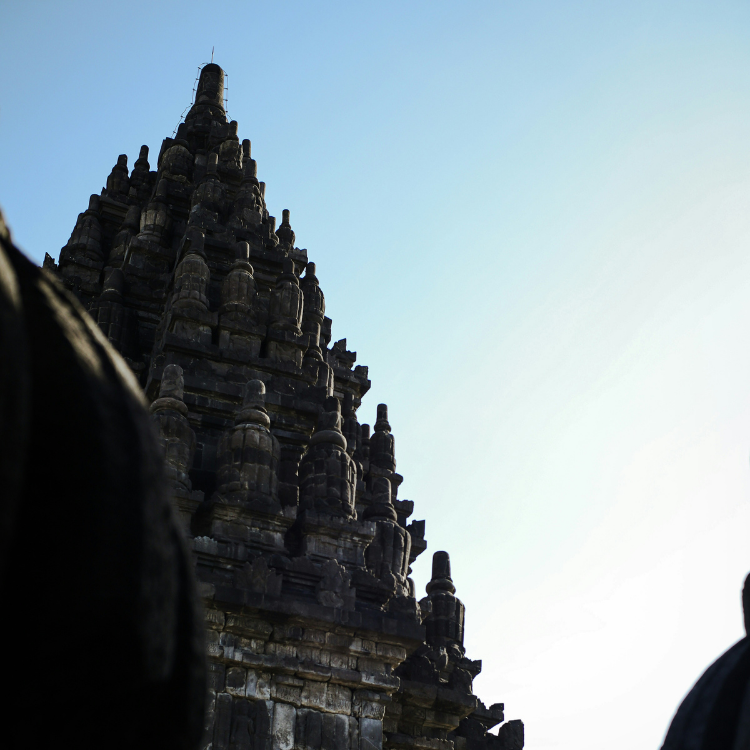
The temple is rediscovered, lying in ruin, covered by volcanic ash and overgrown vegetation, its glory forgotten and its stories turned into local folklore.

During the short British administration of Java, Sir Thomas Stamford Raffles, the British governor of Java, takes an interest in the island’s ancient monuments. Prambanan comes to the attention of the wider world through his efforts.

The first serious restoration efforts begin, initiated by the Dutch colonial government. These efforts are sporadic and face numerous challenges, including the complexity of the site and the lack of original documentation.
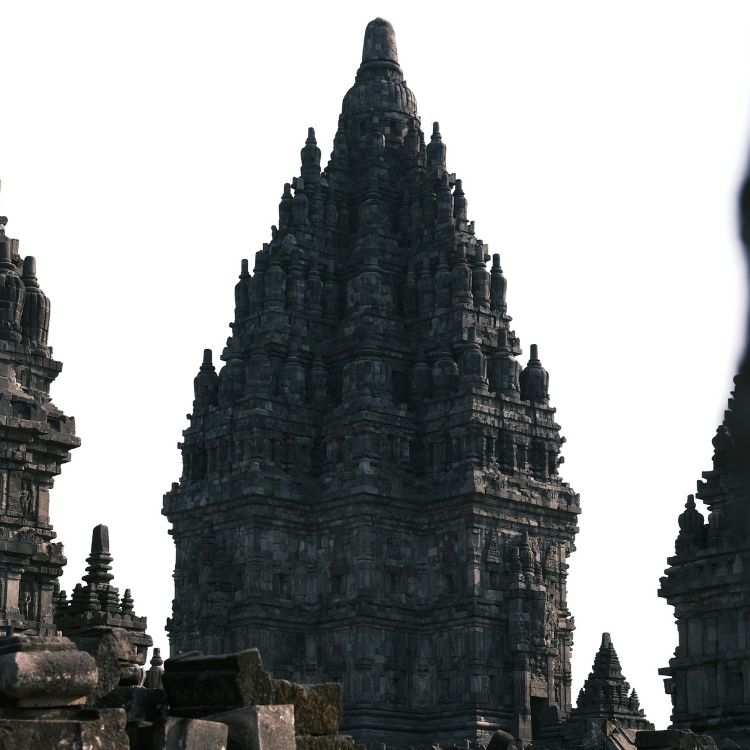
The first serious restoration efforts begin, initiated by the Dutch colonial government. These efforts are sporadic and face numerous challenges, including the complexity of the site and the lack of original documentation.

The Indonesian government takes over restoration efforts, marking the beginning of more systematic and scientific approaches to conservation and restoration.

UNESCO designates Prambanan as a World Heritage Site, recognizing its architectural and cultural significance. This designation brings international attention and support for its preservation.
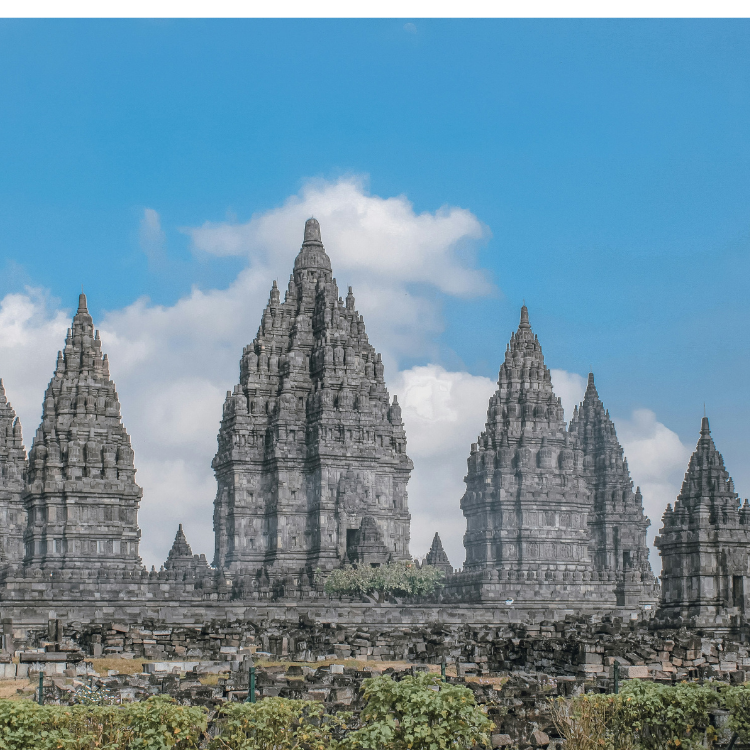
UNESCO designates Prambanan as a World Heritage Site, recognizing its architectural and cultural significance. This designation brings international attention and support for its preservation.

A major earthquake strikes Yogyakarta, causing significant damage to Prambanan. This disaster prompts an intensive restoration program, leveraging modern technology and traditional techniques.
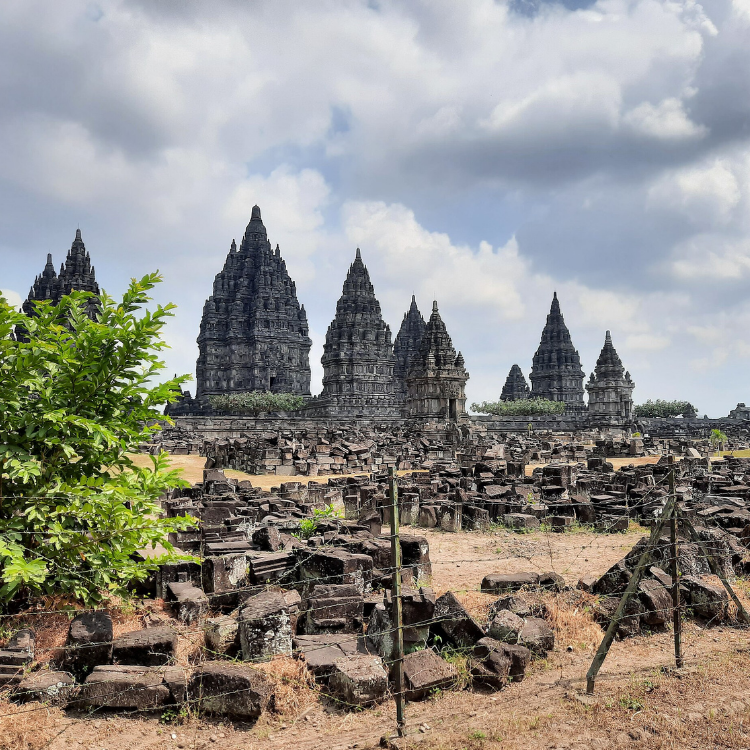
Enhanced preservation efforts and the development of the site for tourism, including the establishment of the Ramayana Ballet performance as a regular event, help to increase global awareness and appreciation for Prambanan.
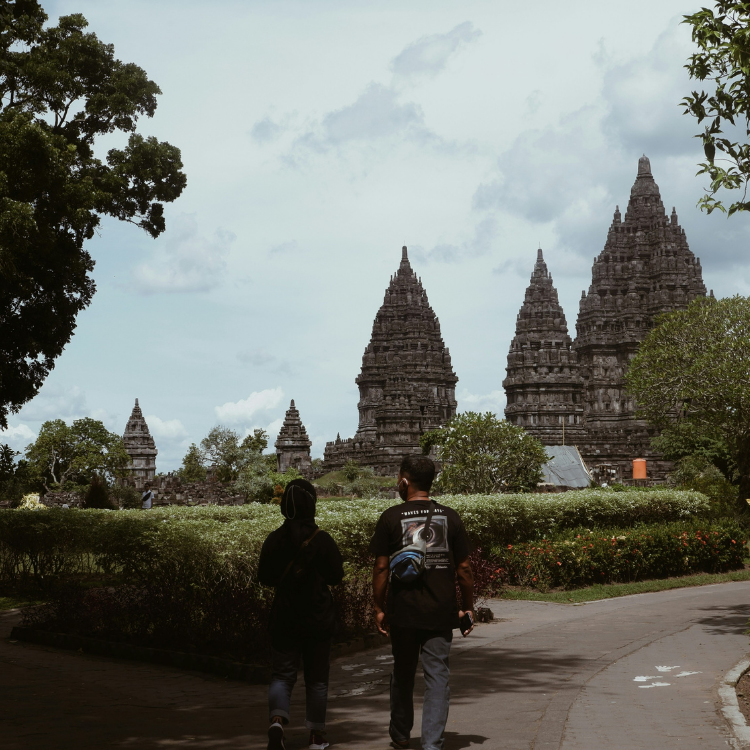
Enhanced preservation efforts and the development of the site for tourism, including the establishment of the Ramayana Ballet performance as a regular event, help to increase global awareness and appreciation for Prambanan.

Prambanan continues to be a focal point of cultural and religious ceremonies, attracting visitors from around the world. Its role as a center for Hindu worship and Javanese culture is reinforced through ongoing conservation efforts and scholarly research.
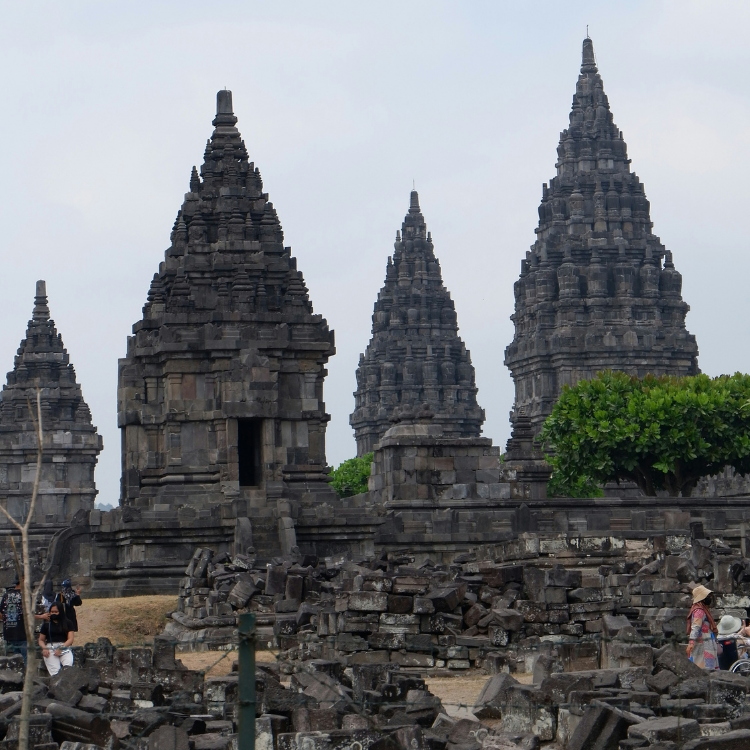

The Prambanan Temple, a majestic symbol of spiritual grandeur, rises from the plains of Central Java, Indonesia, as a testament to ancient ingenuity and devotion.
Its inception in the 9th century, under the Mataram Kingdom, was not merely an architectural endeavor but a profound spiritual statement.
The temple, dedicated to the Trimurti gods of Hinduism—Brahma, Vishnu, and Shiva—was conceived as a visual hymn to the divine, reflecting a cosmic harmony through stone.

As visitors approach Prambanan, they are greeted by a staggering sight: towering spires that pierce the sky, intricate carvings that narrate epic tales, and a grandeur that rivals the spiritual fervor of its creators.
This complex, the largest Hindu temple site in Indonesia, is a masterpiece of Lokapala architecture, with its central towering Shiva temple flanked by smaller sanctuaries dedicated to deities and demigods.
Each structure is a harmonious blend of aesthetics and spirituality, inviting onlookers into a world where mythology and architecture intertwine.
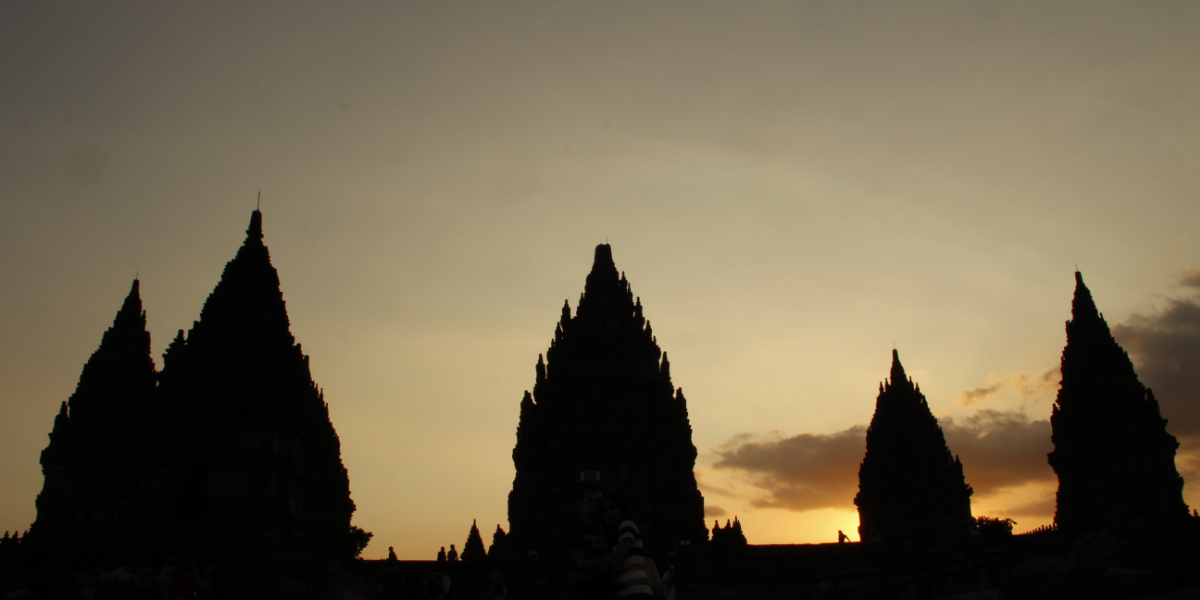
Prambanan’s history is a saga of glory, abandonment, and rediscovery.
Following a series of volcanic eruptions and political shifts, the temple was gradually forsaken, its grand spires yielding to the creeping jungle.
For centuries, it stood silent, its stories and sanctity preserved in the ruins.
The rediscovery of Prambanan in the 17th century by a Dutch surveyor marked the beginning of its rebirth, drawing attention to its significance and the need for preservation.

The temple’s reliefs are a canvas on which the ancient Javanese expressed their artistic and spiritual aspirations.
The Ramayana epic, masterfully carved on the inner walls of the balustrades, brings to life the heroic tale of Rama and Sita.
These narratives, etched in stone, serve as a bridge between the mortal and the divine, offering insights into the cultural and religious milieu of the time.
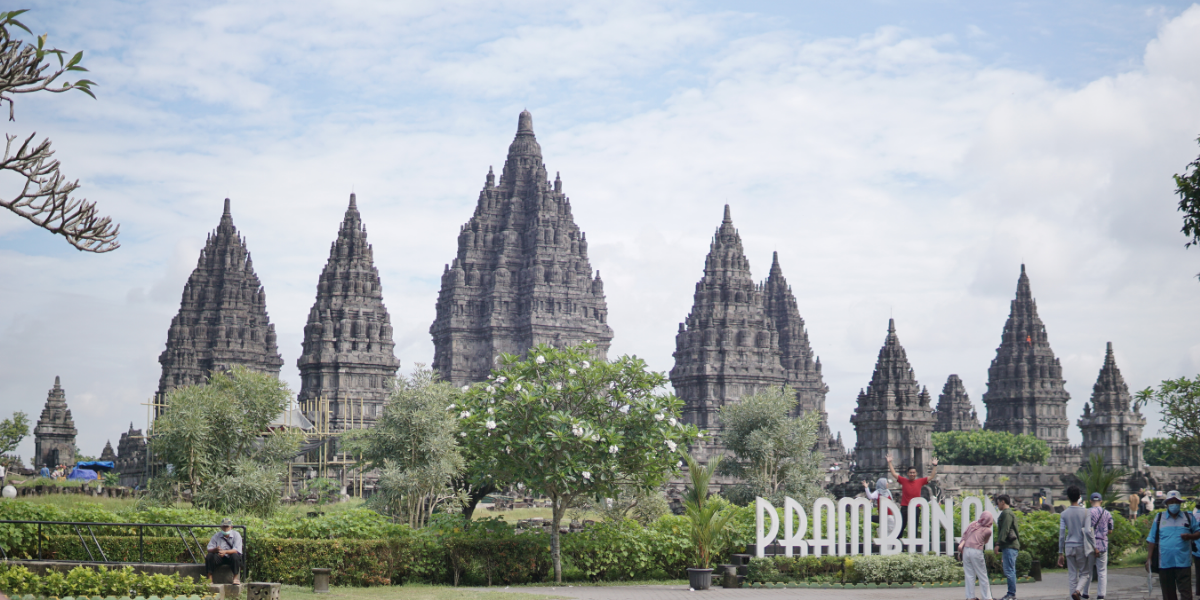
Prambanan is not just an ancient monument but a living site of worship and celebration.
Despite its age, Hindu ceremonies and festivals continue to animate its courtyards, rekindling the spiritual essence that has permeated the site for centuries.
The annual Ramayana Ballet, performed against the temple’s dramatic backdrop, is a cultural spectacle that revives the epic tales depicted on its walls, connecting the past with the present in a vibrant display of faith and artistry.
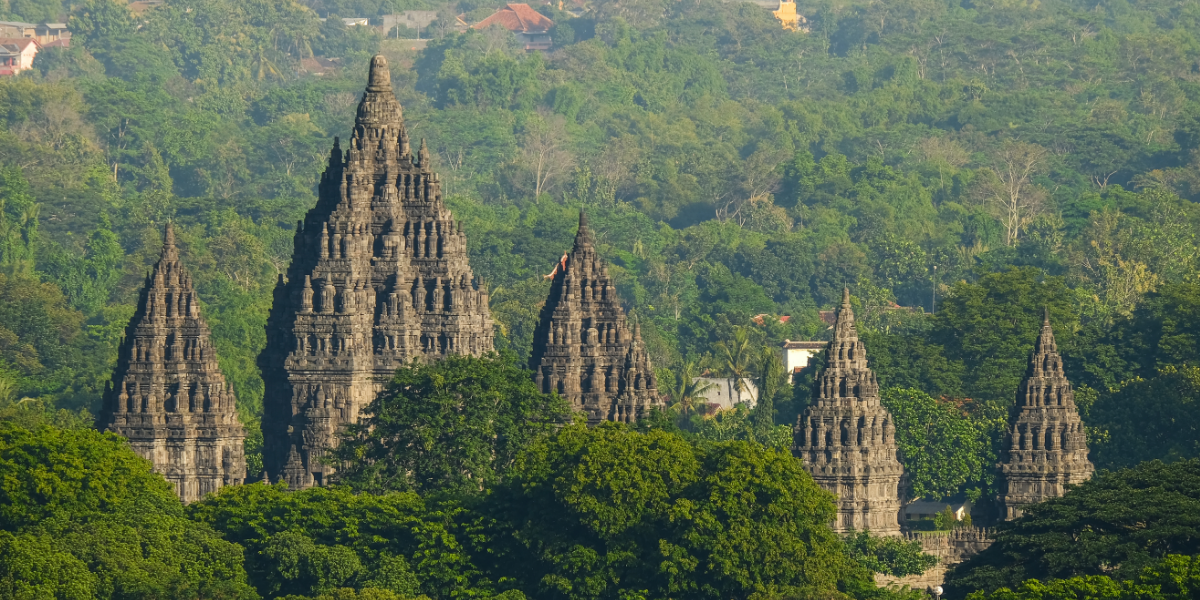
The temple’s journey through time is marked by resilience in the face of natural calamities.
Earthquakes, particularly the devastating 2006 Yogyakarta earthquake, have challenged its stability but also galvanized efforts towards its restoration and conservation.
These efforts underscore a commitment to safeguarding this architectural marvel for future generations, ensuring that its spiritual and cultural legacy endures.
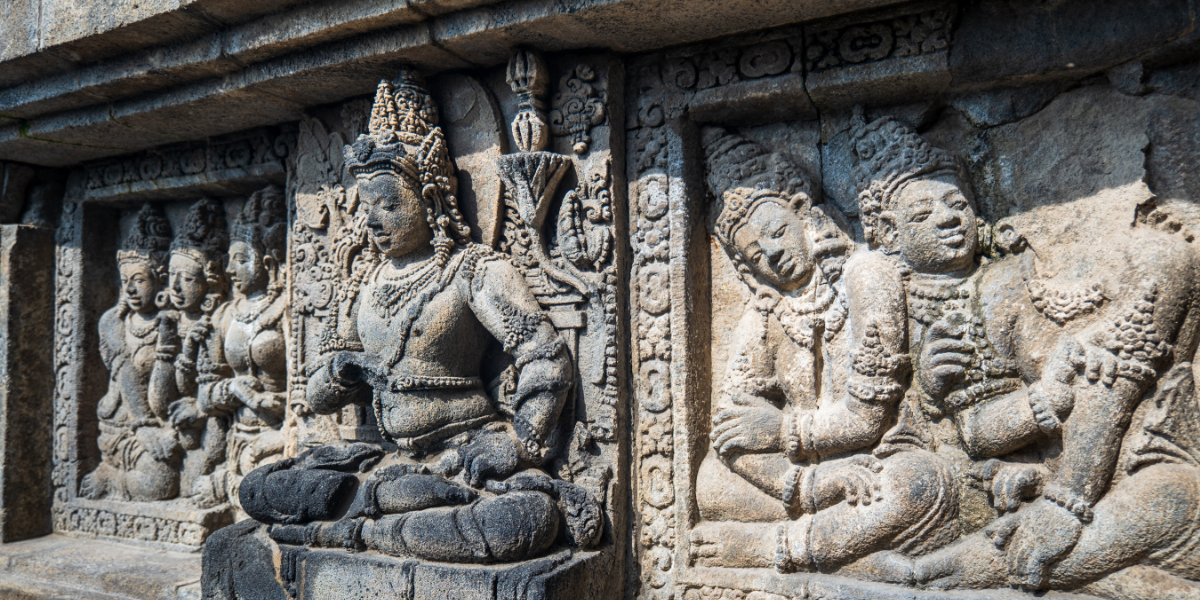
Prambanan stands at the crossroads of cultures, embodying a fusion of Hindu and Buddhist architectural elements, a testament to the pluralistic society of ancient Java.
This confluence is visible in the temple’s layout, iconography, and the syncretic traditions it has inspired, highlighting a historical narrative of coexistence and mutual respect among different religious communities.
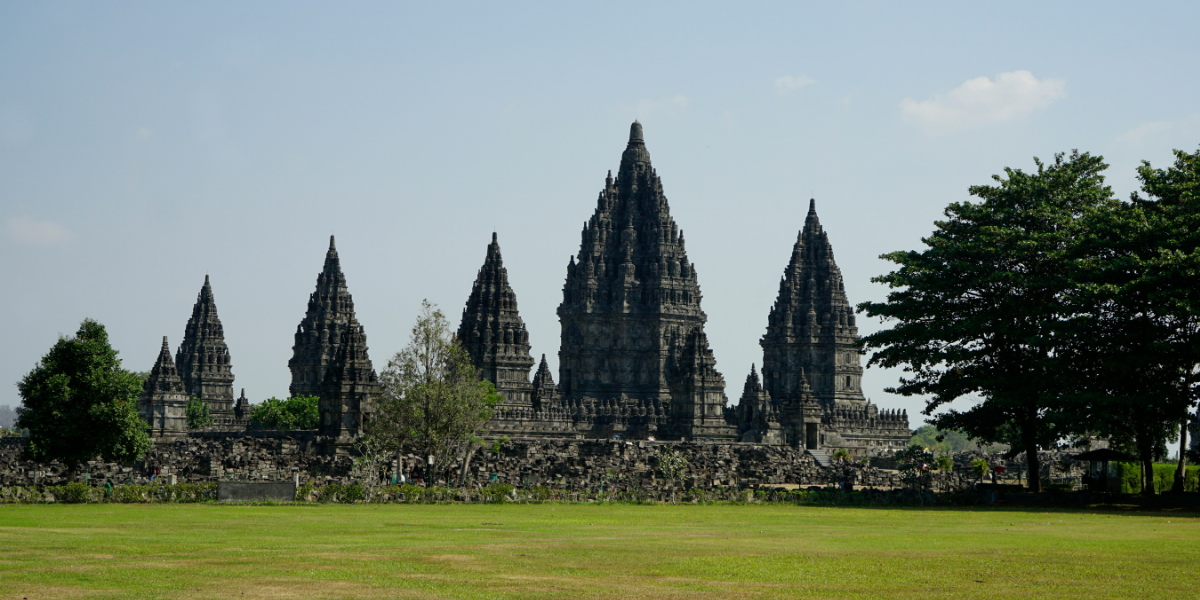
The stewardship of Prambanan is a shared endeavor, involving local communities, government agencies, and international organizations.
This collective guardianship not only focuses on the temple’s physical preservation but also on maintaining its intangible heritage, including rituals, dances, and oral traditions that have been passed down through generations.

Today, Prambanan attracts pilgrims, historians, and travelers from across the world, drawn by its spiritual significance and historical mystique.
It serves as a beacon of Hinduism in Indonesia, offering a window into the past and a space for contemplation and celebration in the present.
The temple’s enduring allure lies in its ability to connect individuals to the divine, to history, and to the shared human endeavor to reach beyond the mortal realm through faith, creativity, and community.
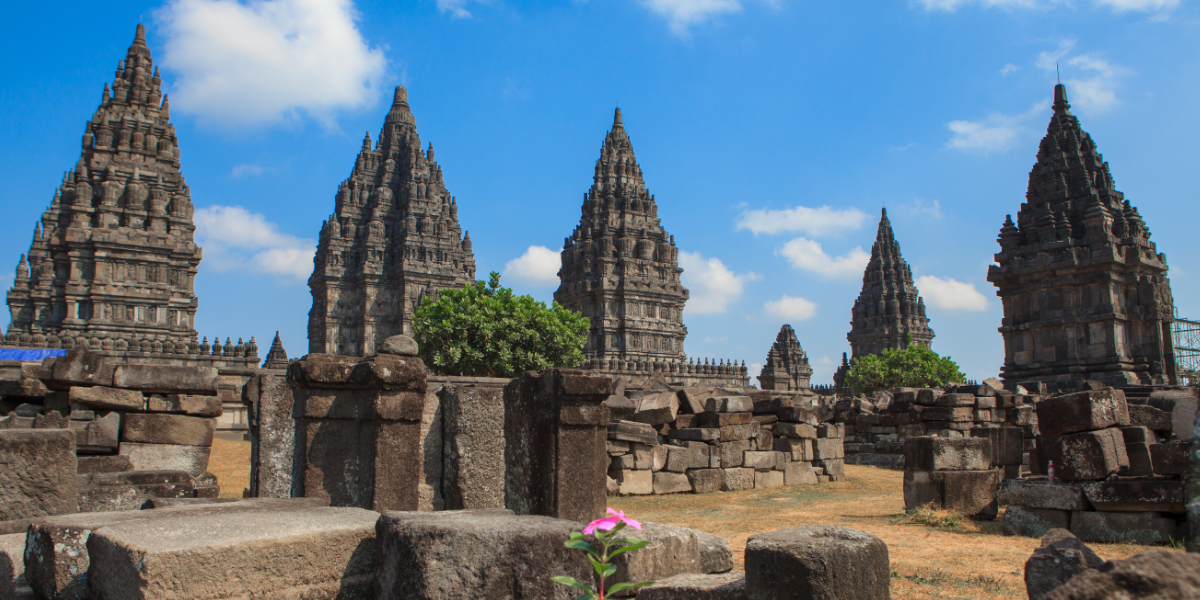
The Prambanan Temple complex, with its soaring towers and sacred halls, stands as a monument to human aspiration and divine inspiration.
Its legacy, carved in stone and immortalized in the hearts of those it touches, continues to echo the ancient chants of devotion, a reminder of humanity’s quest for the celestial.
Through its cyclical narrative of decline and renewal, Prambanan embodies the perpetual rhythm of life and the eternal pursuit of spiritual enlightenment.
Contact Us
Copyright © 2025 Temples.org. All rights reserved.